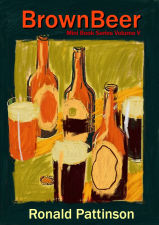No. 1 is roughly equivalent to 140/- in terms of strength. And the grist is quite similar. So what was the difference between the two? The hopping rate. 120/- was hopped at 8.5 lbs per quarter (336 lbs) of malt, No. 1 at 12.5 lbs. To me, that’s an indication that No. 1 was intended to be aged longer.
The grist is much like that of No. 2. Base malt and dextro-maltose. Though with only two types of malt. There may have been some caramel added to darken the colour.
Rather more complicated hopping: Kent from the 1884 and 1885 harvests, American from 1884 and 1885, and Californian from 1884. Quite a lot of hops, too. Leaving it with over 100 IBU (calculated).
Long ageing for this big boy. Between 18 and 24 months, is my guess.
| 1885 William Younger No. 1 | ||
| pale malt | 21.00 lb | 90.32% |
| No. 2 invert | 2.25 lb | 9.68% |
| Cluster 120 min | 4.50 oz | |
| Fuggles 60 min | 4.50 oz | |
| Fuggles 30 min | 4.50 oz | |
| Goldings dry hops | 2.00 oz | |
| OG | 1108 | |
| FG | 1035 | |
| ABV | 9.66 | |
| Apparent attenuation | 67.59% | |
| IBU | 133 | |
| SRM | 12 | |
| Mash at | 155º F | |
| Sparge at | 163º F | |
| Boil time | 120 minutes | |
| pitching temp | 56.5º F | |
| Yeast | WLP028 Edinburgh Ale | |











































































2 comments:
You would have wanted to to reduce the hop bitterness.
Oscar
Not if it’s aged as long as Ron reports.
Post a Comment